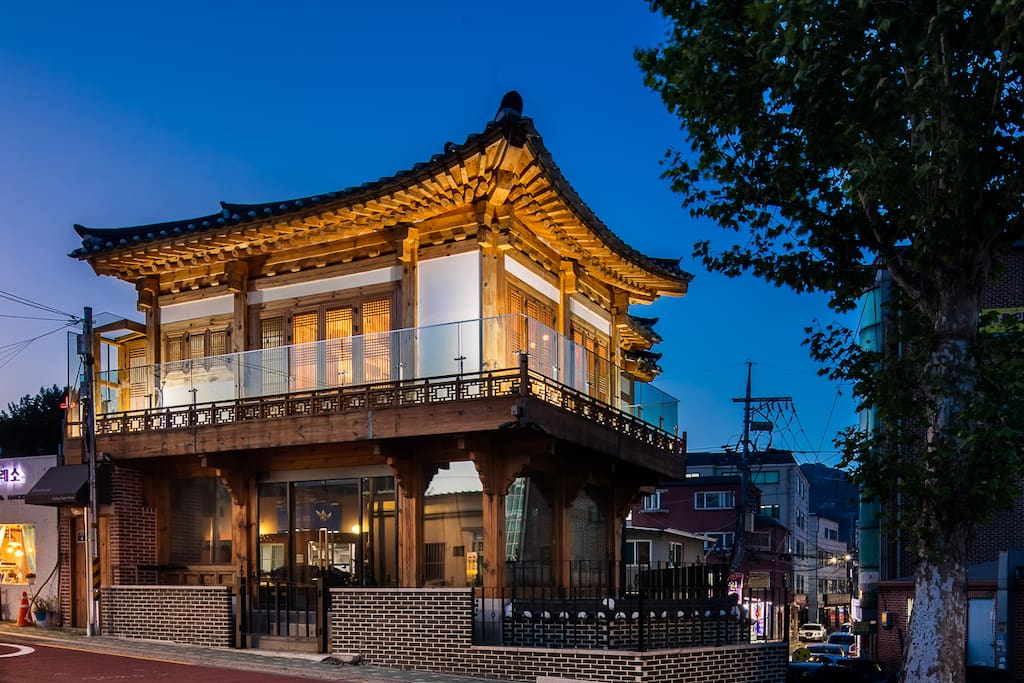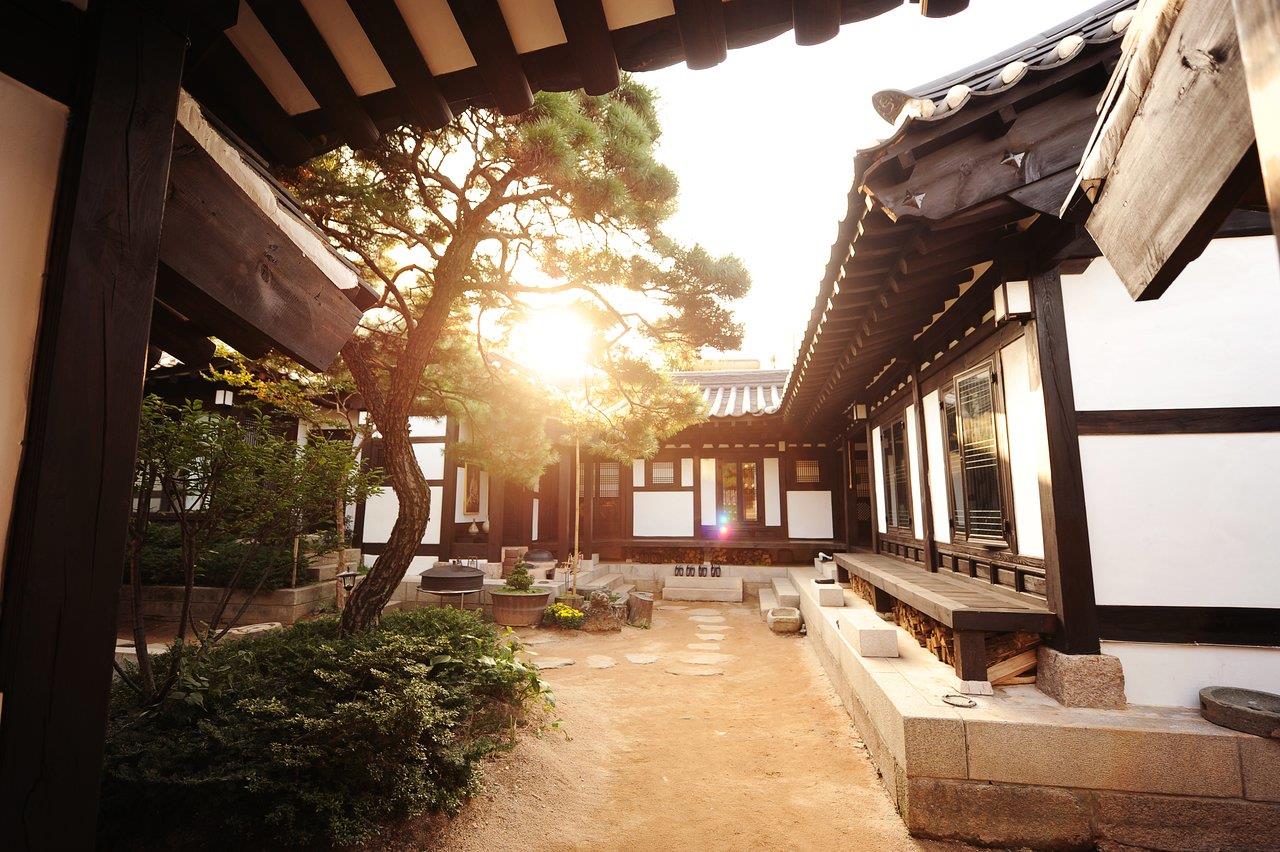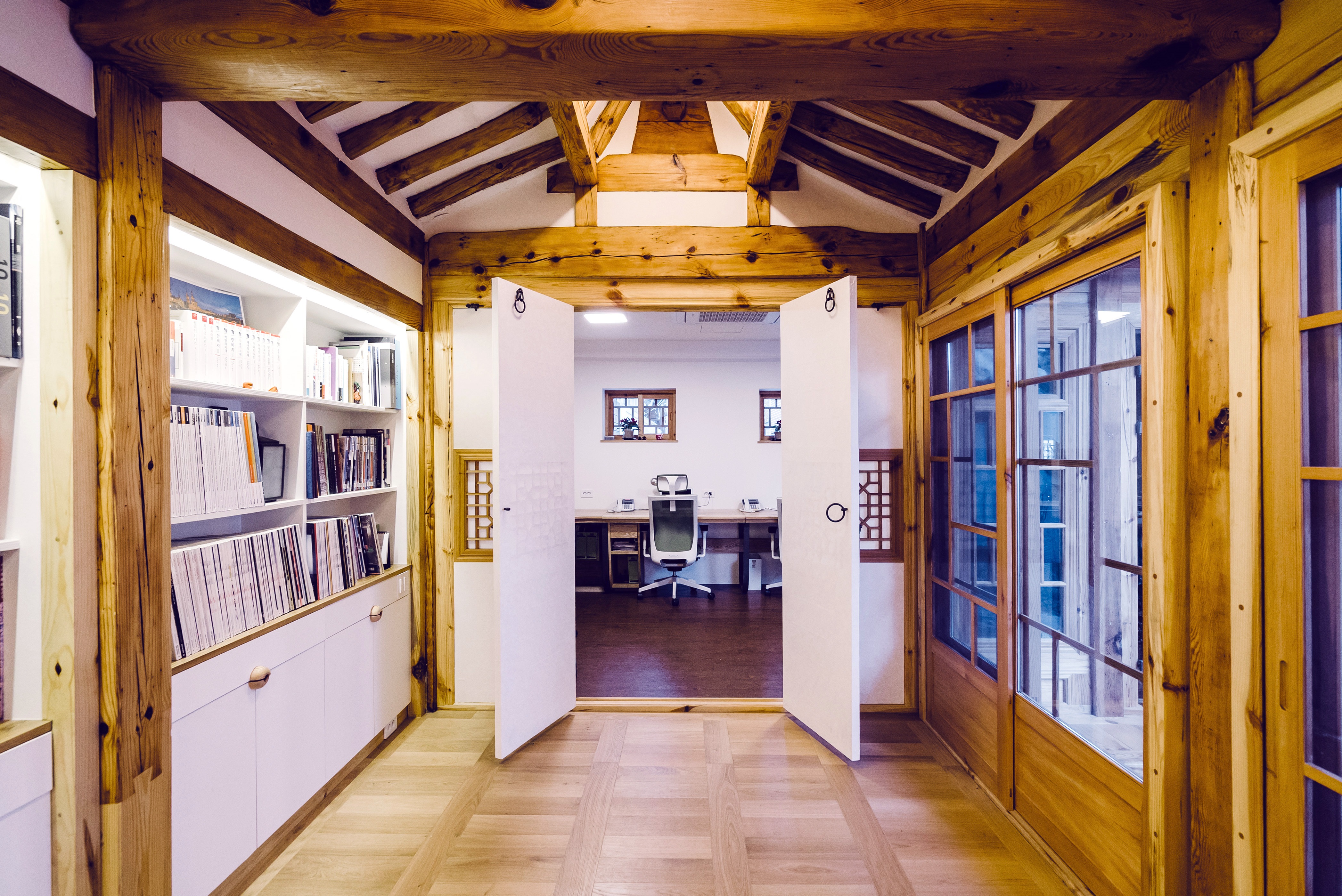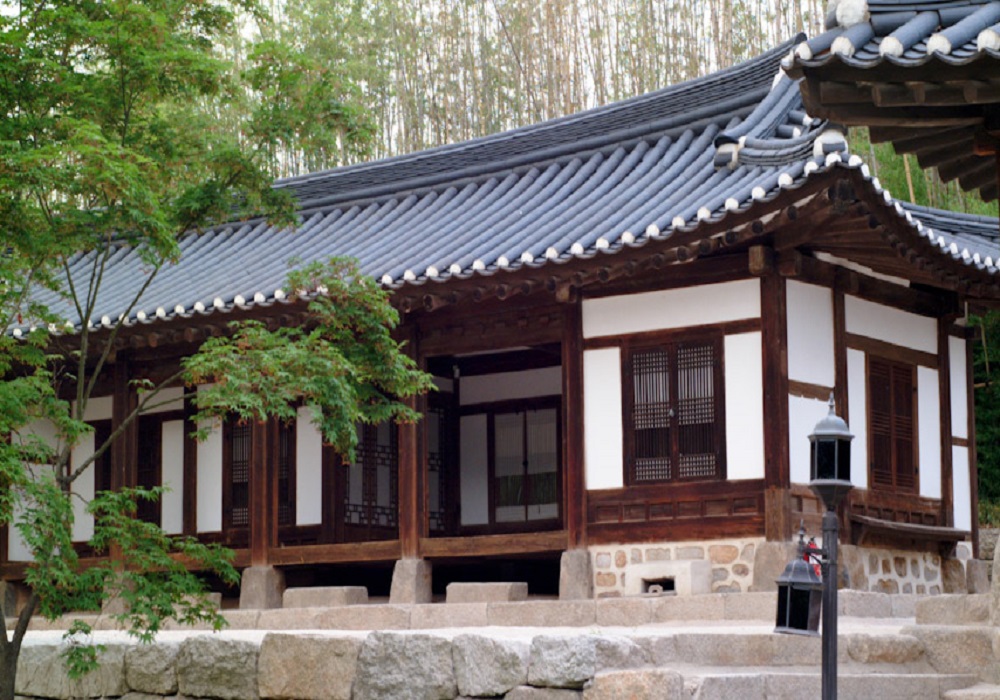5 Traditional Korean Houses You Can Actually Stay In

traditional korean house for sale Akiko Mesa
The Rakkojae Seoul Hanok has five rooms and suites, a jjimjilbang (traditional Korean bathhouse). many of South Korea's hanok were demolished to make way for more space-efficient housing..

Traditional korean house w/modern interior Guest houses for Rent in
Ondol and maru: A unique architectural relationship. Both a huge, 99-room tile-roofed house and a small, three-room thatch or oak bark-roofed mud hut are counted as hanok (traditional Korean house). This is because while there may be differences in material, size or structure, all homes that are equipped with ondol (an underfloor heating system.

4 traditional houses in Korea that you can stay in
Hanok, traditional Korean houses - The ancient house of Yun Jeung, a Confucian scholar of the late Joseon (1392-1910) period, situated in Nonsan, Chungcheongnam-do, also called Myeongjae Gotaek after his pen name. Korean people have developed unique architectural techniques to build housing that is properly adapted to the surrounding natural.

5 Traditional Korean Houses You Can Actually Stay In
What Is A Traditional Korean Hanok House? Hanok (한옥) is the Korean term referring to traditional Korean housing. These traditional houses are uniquely made to suit the Korean climate. They use all-natural elements which help to stay cool in the sweltering summer of Korea. Also Read: 16 Best Hanok Stays in Seoul

Traditional and Contemporary Natural Building in Korea The Last Straw
Best Korean Food in Talence: See Tripadvisor traveller reviews of Korean Restaurants in Talence.

Refurbished 1930s traditional housing in Bukchon Hanok Village Jongno
Greenery, open areas, lots of windows, and crystal doors are some of the common features of Korean house designs. Simple L-shaped Korean house design. The sheer beauty of a Hanok. Stunning wood and brick-framed Korean house design. Open-air top flood house designs. Korean house designs with ridge ribbons of concrete.

Bukchon Hanok Village (북촌한옥마을) hanok (traditional Korean house
Harmonious, unique, simple but full of style, the charming and eco-friendly traditional Korean houses, called Hanok - 한옥 in the local language, began to be built in the fourteenth century, during the Joseon Dynasty.. The typical architectures of the Asian peninsula have managed, with some difficulty, to survive the relentless building development of the 70s that led South Korea to be the.

Traditional Korean House in Summer, South Korea Stock Image Image of
House of January by Studio Gaon, Deokjin-gu, South Korea. The wood gable and the dark-gray colored roof emanates traditional Korean architecture but with modern materials. Inside the home, the use of mixed materials such as hanji, timber, concrete, and aluminum creates a modern but homey look and a clean airy space.

Traditional Hanok houses in Seoul, South Korea Korea del norte, Corea
Traditional Korean architecture follows the principle of baesanimsu, which states that the ideal house is built with a mountain at the back and a river at the front. While most hanok look pretty similar, the designs actually vary depending on the region. In the colder northern areas of Korea, they are positioned in a square shape with a.

Hanok The Remodeling of a Traditional Korean House Impakter
Recent price hikes in construction materials have also affected costs, he added. "A rough price we give for hanok renovation (only construction costs without planning costs) would be around KRW.

A traditional Korean house at Namsangol Hanok Village in Seoul, South
Courtesy of Rakkojae Hahoe Village Andong. Step back in time as you cross the threshold of Rakkojae, a charming complex situated in Andong's 600-year-old Hahoe Village. Consisting of four choga - traditional, nature-friendly Korean homes made from straw, wood and soil - each room offers a calming space of traditional furnishings and its.

Traditional Korean House Tour Hanok in Jeonju YouTube
Jan 3, 2024 - Entire home for $139. Todaki hanok Korean Traditional House (Entire House Rent) Todaki Hanok Korean Traditional House has three bedrooms with futons and 2 beds, 2 ba.

[Korean Luxurious House] ‘Chung Song Je’ is amazing Hanok(Korean
The hanok is a traditional Korean house typology that originated during the Joseon Dinasty (13 th -19 th century), and is still used and inhabited today through all South Korea. Hanok houses can be found anywhere, strewn throughout countryside villages, or nestled between skyscrapers in bustling cities, preserving the lifestyle of an ancient time.

traditional korean home architecture
A Hanok is a traditional Korean house from the 14 th century. The timber frames and curved roofs make a hanok unapologetically photogenic. But more than a visual marvel, they are serene accommodations with a strict nature- and topography-adhering structure. There is a lot about a hanok that brings you closer to nature.

Traditional Korean House, South Korea Stock Photo Image of south
A traditional Korean house stands peacefully near Kookmin University's back gate. It is Myungwon Folk House, designated as Seoul Cultural Asset No. 7. Myungwon Folk House, originally house of Joseon yangban (aristocrat) Han Gyuseoul, was moved to its current location in the 1980s. Now affiliated to Kookmin University, it is an open space used.

Important Inspiration South Korean Traditional Houses
Hanok is simply a traditional Korean house.These houses are built for a long time and over the years, its importance and traditional design are maintained. As per the Korean architecture, planning for the house is done keeping in mind the land and seasons.An ideal house is considered the one that has a river in the front of the house and a mountain at the back.